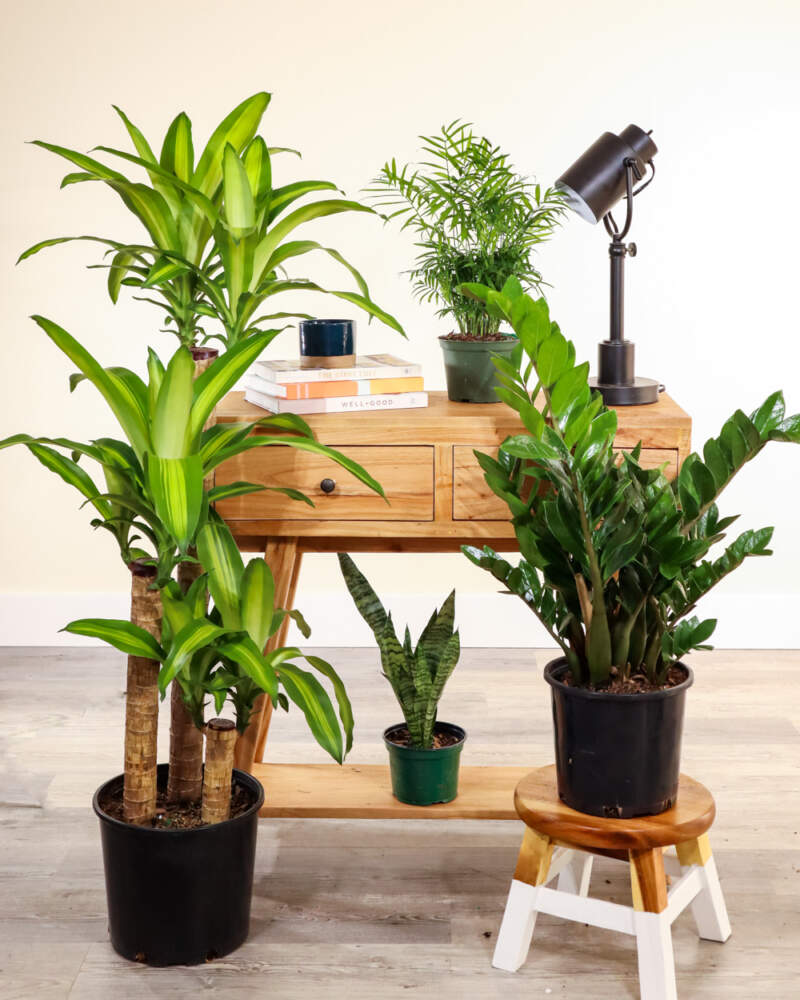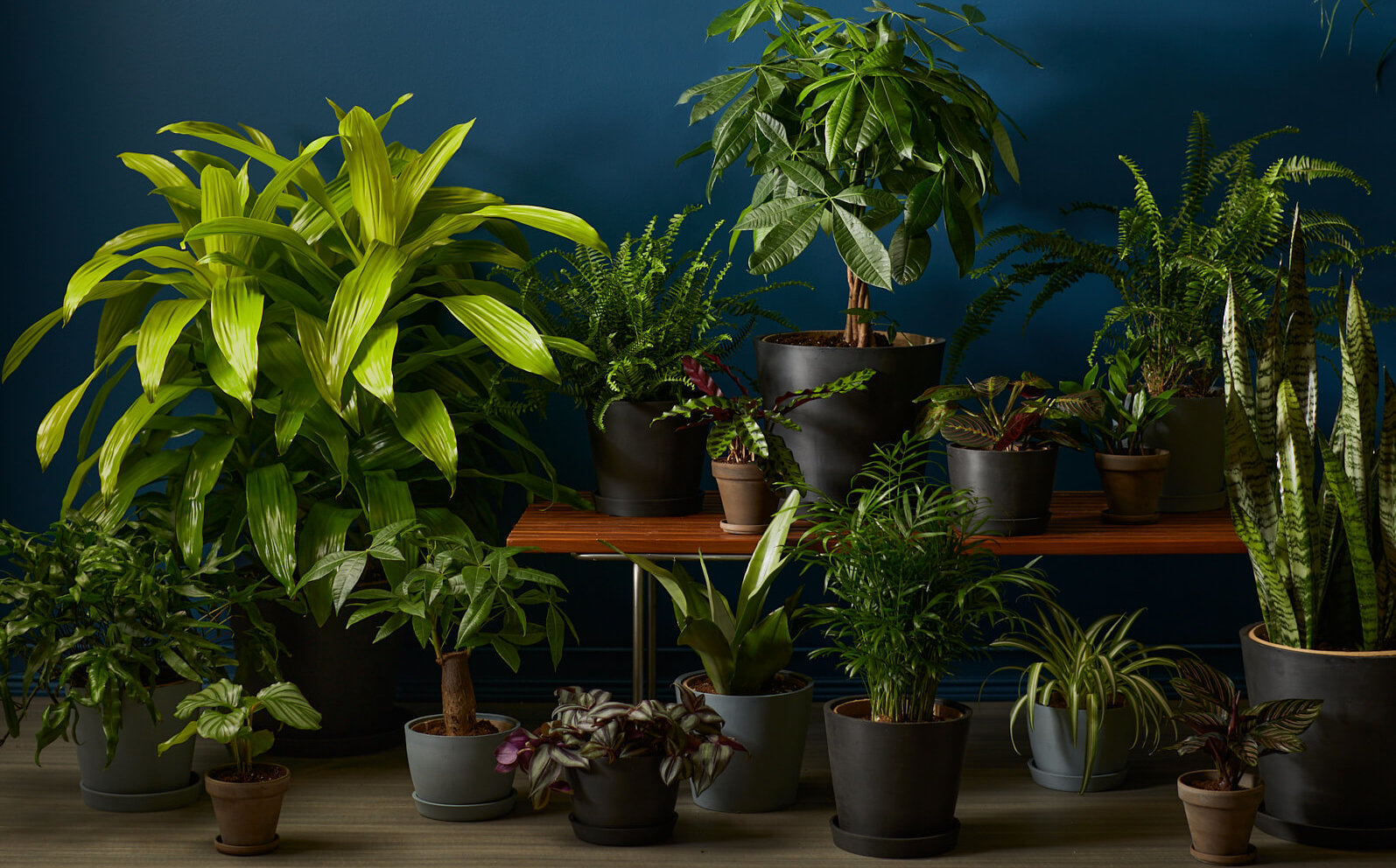Transform Your Home With Beautiful Low-Light Indoor Plants and Their Advantages
Incorporating low-light interior plants into your home can dramatically boost both the aesthetic and environmental top quality of your space. These plants, which grow in dim problems, serve not just as attractive elements but additionally as natural air purifiers, making them excellent for metropolitan occupants or those with limited sunshine exposure. As we check out the various kinds of low-light plants and their benefits, you might find shocking ways to integrate them into your home that can change your environments in methods you may not have actually expected.
Benefits of Low-Light Plants
Low-light plants supply numerous advantages for indoor environments, making them a superb choice for both beginner and skilled gardeners. Among the main advantages is their adaptability to low-light conditions, allowing people to boost their home without the need for comprehensive sunshine direct exposure. This particular makes them perfect for apartment or condos, workplaces, and other locations with limited natural light.

Furthermore, integrating low-light plants right into home design can elevate the visual allure of an area. Their lush foliage and differed appearances produce a soothing ambience, contributing to general wellness. The existence of plant has been connected to decreased tension levels and boosted efficiency, making low-light plants a useful selection for enhancing both physical and mental health in indoor settings.
Leading Low-Light Indoor Plants
While many indoor plants flourish in bright light, a number of varieties are particularly fit for low-light problems, making them optimal for various interior rooms. One prominent option is the Serpent Plant (Sansevieria), recognized for its striking upright leaves and strength, needing marginal care. One more exceptional option is the Pothos (Epipremnum aureum), which includes heart-shaped leaves and can route magnificently from shelves or hangers, flourishing in reduced light and adding a lush touch.
The ZZ Plant (Zamioculcas zamiifolia) is commemorated for its glossy leaves and capacity to stand up to overlook, making it perfect for busy way of livings. In a similar way, the Peace Lily (Spathiphyllum) not only tolerates low light but likewise generates stunning white flowers, boosting any room's visual.
For an unique touch, think about the Cast Iron Plant (Aspidistra elatior), which certainly lives up to its name, thriving in the darkest edges of your home. Finally, the Chinese Evergreen (Aglaonema) supplies a range of fallen leave patterns and colors while being exceptionally forgiving in low-light conditions. These plants not just enhance indoor settings yet additionally contribute to air purification, boosting your space.
Treatment Tips for Low-Light Plants

Watering methods are critical; these plants usually prefer somewhat dry conditions. Overwatering can cause root rot, so make certain that the top inch of soil is dry prior to watering once more. Usage pots with drainage openings to enable excess moisture to get away.
Moisture is another essential aspect. Several low-light plants, such as ferns and peace lilies, benefit from higher humidity levels. To raise humidity, consider misting the fallen leaves or placing a tray of water near the plants.
Fertilization needs to be approached with care. Throughout the expanding season, make use of a weakened, well balanced fluid plant food on a monthly basis to support growth, yet avoid fertilizing during the inactive cold weather.

Creative Ways to Present Plants
Indoor plants can work as exciting focal factors in any type of room, boosting both aesthetic appeal and setting. Innovative display screens can raise the visual influence of low-light plants, making them an indispensable component of your home decor. One efficient method is to utilize tiered plant stands, which allow you to showcase numerous plants at differing heights while taking full advantage of floor room.
Hanging planters are another innovative option, developing a feeling of deepness and drawing the eye upward. Consider macramé hangers or wall-mounted racks to present an unique texture and design.
For an extra structured approach, usage geometric terrariums or glass containers to house your plants, including a contemporary touch to your indoor garden. You can also repurpose classic products, such as teacups or wood see it here crates, for a diverse screen that mirrors your character.
Enhancing Home Atmosphere With Plants
Incorporating low-light plants right into your home not just improves aesthetic appeal yet likewise contributes substantially to the general atmosphere. These plants act as all-natural design components, presenting a sense of harmony that can transform any type of space. The visibility of plant fosters a calming atmosphere, which is especially advantageous in high-stress atmospheres such as home workplaces or living areas.
Low-light plants, such as serpent plants, pothos, and ZZ plants, are not only visually pleasing however additionally enhance indoor view website air quality by filtering toxins. This dual function boosts the atmosphere even more, creating a healthier living room (Best low-light indoor plants). The calculated positioning of these plants can also affect the understanding of room; for example, high plants can draw the eye up, making ceilings show up higher and rooms more spacious
Additionally, differing appearances and colors of foliage include deepness to interior decoration, enabling imaginative expression in home designing. Whether placed on racks, in edges, or as focal points, low-light plants can raise the mood of any kind of room. In recap, incorporating these plants into your home is a reliable way to foster a cozy, welcoming atmosphere while gaining the benefits of enhanced air top quality and visual versatility.
Final Thought
Integrating low-light indoor plants into home settings provides various benefits, consisting of improved visual charm and improved air quality. These resilient plants, such as the Serpent Plant and Tranquility Lily, call for marginal light and upkeep, making them suitable for diverse way of livings.
While lots of interior plants prosper in brilliant light, several varieties are particularly appropriate for low-light conditions, making them perfect for various interior areas. One efficient technique is to make use of tiered plant stands, which allow you to showcase multiple plants at differing heights while optimizing floor room.
Low-light plants, such as serpent plants, pothos, and ZZ plants, are not just visually pleasing however also improve interior air quality by filtering system pollutants. Best low-light indoor plants. The strategic placement of these plants can additionally affect the understanding of area; for instance, high plants can attract the eye upward, making ceilings show up greater and rooms extra roomy
These durable plants, such as the Serpent Plant and Peace Lily, call for marginal light and maintenance, making them appropriate for diverse lifestyles.